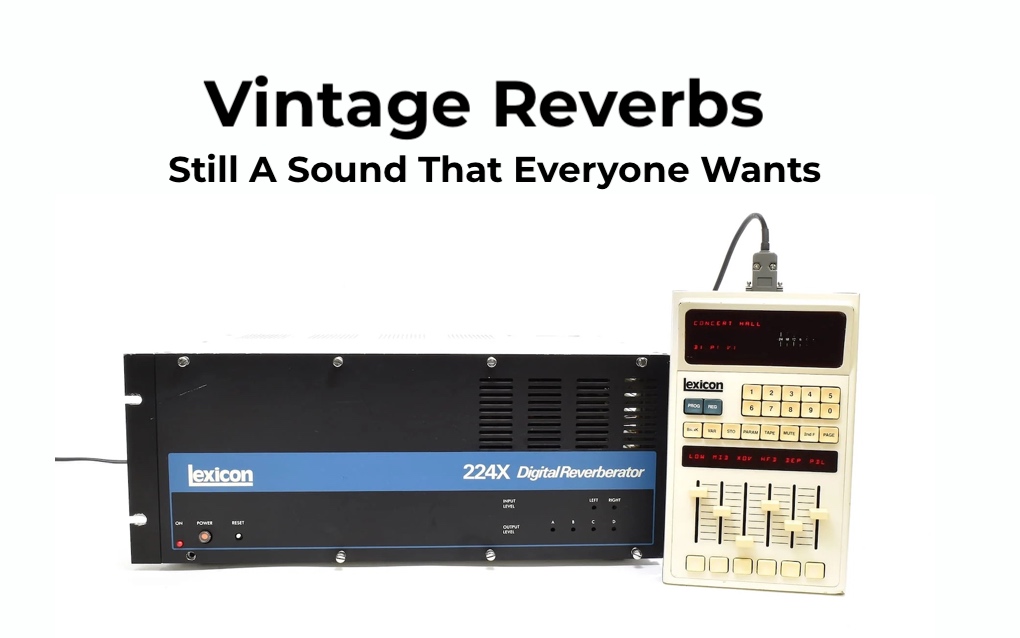- in Production by Bobby Owsinski
Why The Sound Of Vintage Reverbs Still Retain Their Allure
Just like with almost any plugin category, you don’t have to look very hard to find a reasonably good reverb plug these days. Name a developer and they probably have a reverb that’s more than usable. Even though many developers have tried to think outside the box making reverb parameters more sophisticated, the sound of vintage reverbs still figure in almost any mix these days. But why?

If we look back at early vintage reverbs, all they were trying to do was emulate the acoustic chambers, plates and halls that recording engineers came to love. The problem was that even a plate reverb was still 8 feet by 4 feet and weighed 600 pounds, so it wouldn’t fit in many small studios.
The First Digital Reverbs
When the first EMT 250 reverb was released in 1976 and weighed just 100 pounds, not only was it small enough to sit in the control room but it was a lot more variable as well, since you could set the predelay time (no more tape machines), decay time, and even have multiple programs for delay, chorus, echo and phasing. Being early digital, it had its limitations though as it was just 12 bit with a sample rate of 24kHz and a frequency response that topped out at around 10kHz.
The next digital reverb to make an even bigger impact was the Lexicon 224 (and later the 224X and 480L) which was released in 1978 and labeled the first “affordable” digital reverb, coming in at just $7,500 (worth almost $35,000 in today’s dollars). Again this was a 12 bit unit with a sampling rate of only 20kHz and a frequency response that reached around 8kHz.
By the 1980s and early 90s, there were many more digital reverbs on the market by a variety of companies, most of the much more affordable than the early models. Units like the Yamaha SPX90, AMS RMX16, Yamaha REV-7, and the Sony DRE-2000 tried to bring the price down so that smaller studios could afford them, as well as trying to increase the bit depth and sampling rate as the technology advanced.
What We Like
But it turns out that’s exactly what we like about vintage reverbs – the technical limitations. A 16 bit or even 12 bit quantization, or a frequency response that tops out at 10kHz, turns out to be quite adequate, and even desirable, for reverb. If it’s too clean and hi-fi, it no longer sounds natural.
That’s not to say that you can’t make a great record with a brand new digital reverb plugin, because certainly you can and many mixers do. But you’ll find that they’ll add some saturation and limit the bandwidth to make it fit better in the mix, things that vintage reverbs do naturally.
Technology marches on and you could point to just about everything in audio today and make a valid claim that it’s at least as good or better than what was available in those early years of the 70s and 80s. Vintage reverbs may be the one place where the tech limitations were truly a benefit.

